![]()
Tue, Dec 18, 2012 | terrorism-info.org.il
Hezbollah has a 30-year history of terrorist activity in Lebanon, the Middle East and around the globe, directed against Israel, the Jewish people, the United States and the West, pro-Western Arab states and Hezbollah’s enemies in Lebanon. This study is published by The Meir Amit Intelligence and Terrorism Information Center. You can download this study in PDF format here.
Overview
Since its establishment in Lebanon 30 years ago, Hezbollah has, without interruption, carried out or planned a variety of terrorist attacks around the globe, using different methods. Those terrorist attacks are part of Iranian policy, which uses Hezbollah as its main proxy through the Islamic Revolutionary Guards’ Qods Force and other governmental institutions. The targets and emphases change from time to time according to Iranian and Hezbollah considerations and interests. The targets include Israel and the Jewish people, the United States and other Western countries, Hezbollah and Syria’s opponents in Lebanon, and Arab regimes hostile to Iran and the “resistance camp” it leads.
In recent years Hezbollah has been involved in terrorist (an occasionally guerilla) activities in different arenas using various methods against its targets. At the same time, with Iranian and Syrian support, it has been upgrading its military-terrorist infrastructure in Lebanon, which far surpasses those of other terrorist organizations in the Middle East and beyond.
A short summary of Hezbollah’s terrorist and guerilla activity and its military buildup follows:
- In Lebanon Iran and Syria have enlarged and upgraded Hezbollah’s militaryterrorist infrastructure since the Second Lebanon War. Its main military asset is an arsenal of an estimated 60,000 rockets and missiles which threaten Israel’s civilians. Hassan Nasrallah, Hezbollah’s leader, boasted that he had precise rockets and a bank of targets, and could turn the lives of hundreds of thousands of Israeli civilians into a living hell. Hezbollah also carries out personal terrorism against its opponents in Lebanon, mainly senior figures. The objective is to scare and deter Hezbollah’s opponents, mainly after the erosion of its status following its support for the Syrian regime.
- In the international arena, Hezbollah participates in the global terrorist campaign carried out by the Iranian Qods Force, whose main targets are Israeli diplomats and tourists. Hezbollah’s most recent attack was on an Israeli tourist bus in Burgas, Bulgaria, considered successful (by Iran and Hezbollah), after a series of failed attacks abroad in previous years.
- In the Palestinian arena, Hezbollah helped Iran upgrade the military-terrorist infrastructure of the terrorist organizations operating in the Gaza Strip after Operation Cast Lead, mainly Hamas and the Palestinian Islamic Jihad. On the eve of Operation Pillar of Defense the terrorist organizations had many thousands of rockets, among them long-range Fajr-5 rockets manufactured in Iran (eight of which hit or were intercepted in the greater Tel Aviv area). In addition, Hezbollah encourages terrorist attacks against Israel from the Gaza Strip and the Sinai Peninsula. During the Palestinian terrorist campaign known as the second intifada, Iran and Hezbollah provided the Palestinian terrorist organizations with financial and military support and handled terrorist squads in the Palestinian territories.
- Inside Israel Hezbollah carries out intelligence and subversive activities. Hezbollah, with Iranian aid, recently sent an unmanned aerial vehicle (UAV) to collect intelligence and to send Israel a deterrent message (UAVs could also be used for offensive purposes). Hezbollah also attempts to smuggle IEDs and weapons into for terrorist attacks (exploiting its ties to criminal networks) and to use Israeli Arabs for intelligence missions supporting its terrorist activities.
- In Syria Hezbollah is part of the Iranian effort (led by the Qods Force) to prevent the topple of the Syrian regime, the central member of the so-called “resistance camp.” Hezbollah provides the Assad regime with guidance, military training, intelligence and weapons, and hundreds of its operatives are present in Syria. In recent months several Hezbollah operatives died in the battles and others were taken prisoner by the rebels. However, Hezbollah does not admit to its military involvement in Syria and claimed that its operatives died while “fulfilling their commitment to jihad.”
- In the Arab states Iran uses Hezbollah for subversion, terrorism and guerilla activities: in Iraq Hezbollah operatives trained and handled the Shi’ite militias operated by the Qods Force against the United States and its allies (until America withdrew from Iraq at the end of 2011). In Yemen Hezbollah helped train the Iranian-supported Houthi rebels; and in Bahrain Hezbollah was recently publicly accused by Bahraini authorities of involvement in a series of explosions in the capital city of Manama. Its objective was to destabilize the Bahraini regime, against which Iran is waging a years-long campaign of terrorism and subversion. Hezbollah does not admit to involvement in terrorism and subversion in Arab countries.
The Structure of This Study
This study is the second part of comprehensive research into the terrorist and subversive activities Iran carries out around the globe directly, and though its main proxy, Hezbollah. The first part, which can also be accessed on the Intelligence and Terrorism Information Center website,[1] deals with the Qods Force as spearheading Iran’s global terrorism and subversion campaign during the last decade. Two additional parts, which will be issued in the future, will deal with the distribution (according to continent and country) of Iran’s global terrorist activity and an analysis of the methods used by Iranian and terrorism and subversion.
The three appendices of this study provide a chronological analysis of Hezbollah’s most glaring terrorist activities in the 30 years since its founding, integral to Iran’s overall policies.[2] In addition to terrorist attacks on civilians, Hezbollah has engaged in guerilla warfare in Lebanon and Iraq, against the IDF and against the United States and other Western armies. The targets have changed from time to time depending on Iranian policy, the constraints Hezbollah has had to deal with in Lebanon and the changing regional and international strategic circumstances during Hezbollah’s 30 years of terrorist activity.
This study includes the following sections:
- Hezbollah’s role in the current global terrorist campaign against Israel.
- Hezbollah’s support for the Assad regime in Syria — update.
- Summary of Hezbollah’s record as a terrorist organization during the 30 years of its existence (1982-2012).
- Reasons for designating Hezbollah as a terrorist organization.
- Three appendices dealing with the chronological distribution of Hezbollah’s terrorist activities:
- Appendix I: Hezbollah’s terrorist activity, 2000-2012
- Overview
- The Lebanese arena
- Building Hezbollah’s rocket arsenal after the IDF left south Lebanon (2000-2006).
- Using the rocket arsenal to attack civilian targets in Israel during the Second Lebanon War.
- Updating the rocket arsenal after the Second Lebanon War (2006-2012)
- Employing terrorism and violence against Hezbollah’s political opposition in Lebanon.
- The Israeli arena
- Overview.
- Sending a UAV into Israeli airspace.
- Using Israeli Arabs to collect intelligence.
- Using drug dealers to smuggle explosive devices into Israel territory.
- The Palestinian arena
- Iranian and Hezbollah (as a subcontractor) support for the Palestinian terrorist organizations operating in the Gaza Strip (2006-2012).
- Iranian and Hezbollah encouragement for Palestinian terrorism during the second intifada (2000-2005).
- Hezbollah’s involvement in smuggling weapons from Iran for the Palestinian terrorist organizations during the second intifada.
- The global arena
- Hezbollah participation in the global wave of anti-Israel terrorism (2008-2012).
- Exposure of a Hezbollah network in Egypt which planned to carry out terrorist attacks (2008)
- The Iraqi arena
- The Qods Force’s use of Hezbollah to support the Shi’ite militias against the United States and its allies (2006-2011)
- The affair of Ali Musa Daqduq
- Appendix II: Hezbollah’s terrorist activities during the 1990s
- Overview
- The global arena
- Hezbollah’s terrorist attacks in Argentina (1992, 1994).
- The attempted bombing of the Israeli embassy in Thailand (1994)
- The Israeli arena
- Terrorist attacks in Israel originating in Europe.
- Terrorism and drugs: the abduction of Elhanan Tannenbaum (2000)
- Appendix III: Hezbollah’s terrorist activities during the 1980s
- Overview
- The Lebanese arena
- Bombing the American embassy and American and French military barracks in Beirut(1983).
- Severe blow to the Lebanese branch of the CIA.
- Abduction of Western nationals.
- Assassination of Western and Jewish figures.
- Epilogue
- The international arena
- Attacks on the American and French diplomatic missions in Kuwait (1983).
- Attempted assassination of the Kuwaiti emir (1985)
- Hijacking planes
- TWA (1985)
- Kuwaiti airplanes (1984, 1988)
- Air France (1987)
- Air Afrique (1987)
- Iranian and Hezbollah involvement in the wave of killings in Paris (1986-1987)
- Prevention of terrorist activity in Germany (1987, 1989)
- Hezbollah network exposed in Spain (1989)
- Appendix I: Hezbollah’s terrorist activity, 2000-2012
Hezbollah’s Role in the Current Global Terrorist Campaign against Israel
For the past four years Hezbollah has participated actively in Iran’s global terrorist campaign against Israel. The recent attack on an Israeli tourist bus in Burgas, Bulgaria, which killed five Israeli tourists and their local bus driver, was the first “successful” attack in the current terrorist campaign, after a series of attempted attacks were foiled. In the terrorist campaign conducted abroad, Hezbollah serves as an Iranian proxy handled by the Qods Force, an elite unit of the Islamic Revolutionary Guards (IRG), which spearheads Iran’s foreign terrorism.[3] Even before the founding of the Qods Force, in the summer of 1982 the IRG established Hezbollah in Lebanon, and has provided it with massive military and financial support in the 30 years since.
Hezbollah’s current targets for terrorist attacks are primarily Israeli diplomatic missions abroad and groups of Israelis on vacation throughout the Mediterranean basin and other tourist destinations. Some of the attacks and attempted attacks were carried out by Hezbollah, directed and supported by the Qods Force (Bulgaria, Cyprus, Azerbaijan and Turkey) and some were carried out by the Qods Force without Hezbollah involvement (Azerbaijan, India, Georgia, Thailand and Kenya).
The terrorist campaign, from the Iranian perspective, is a Iranian response to the “soft war”[4] being waged against Iran and the “resistance camp,” and is also intended to strengthen Iran’s strategic bargaining capabilities and show the United States, the West and Israel that it can harm their interests around the globe. As far as Iran and Hezbollah are concerned, the terrorist campaign is also a way of getting revenge for the death of senior Hezbollah commander Imad Mughniyeh and the killing of Iranian nuclear scientists (for both of which Iran and Hezbollah blame Israel), thus deterring Israel from taking other actions, especially in its war against terrorism and the Iranian nuclear program.[5]

The ruins of the Israeli tourist bus after the blast (Website of the ZAKA spokesman, July 19, 2012).
During the past four years (2008-2012) Hezbollah attempted to carry out six terrorist attacks, some of them in Mediterranean countries popular with Israeli tourists. One proceeded according to Hezbollah’s plans and the others were either prevented or failed. In our assessment, they were carried out by Hezbollah’s foreign operations unit (See below). The attacks were the following:
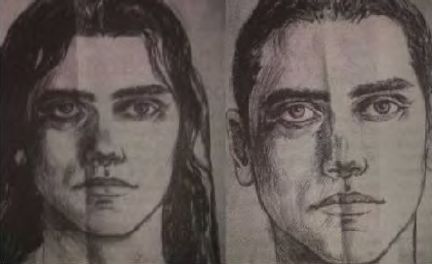
Sketch of the Hezbollah terrorist operative suspected of carrying out the attack in Burgas (Novinite.com website, July 27, 2012).
- Blowing up an Israeli tourist bus in Bulgaria (July 18, 2012): An IED weighing about 3 kilos, or about 6.6 lbs, blew up the back of a tourist bus about to take Israeli tourists from the airport to their hotel in the Black Sea resort of Burgas. According to the Bulgarian minister of the interior, the IED had been assembled in Bulgaria. The terrorist attack was carried out by a Hezbollah operative who, according to information from the Bulgarian authorities, had a local supporter who has not yet been detained. The terrorist was killed by a technical fault which caused the IED to explode prematurely. The blast killed five Israeli tourists, the Bulgarian bus driver and the terrorist. In addition, 36 Israeli civilians were wounded, three of them seriously.
- Attack targeting Israeli tourists in Cyprus, prevented (July 7, 2012): The local authorities in Limassol detained a 24-year old Lebanese Hezbollah operative who was collecting information about Israeli tourists arriving on the island by air; he was carrying a Swedish passport (the Hezbollah terrorist operative involved in the attack in Thailand also carried a Swedish passport; see below). In our assessment, he was collecting information in preparation for an attack on Israeli tourists visiting the island, possibly the same sort of attack carried out in Bulgaria.
- A terrorist attack on Israelis at a tourist center in Bangkok, Thailand (middle of January, 2012): Hezbollah, instructed by the Qods Force, attempted to attack sites visited by Israelis using IEDs. A Lebanese Hezbollah terrorist operative named Hussein Atris, carrying a Swedish and Lebanese passports, was detained at the Bangkok airport.[6] Another Hezbollah operative, also carrying a Swedish passport, managed to escape. Hussein Atris’ interrogation led the police to a commercial building in Bangkok where they found a large quantity of chemicals used in the manufacture of explosives (about 4,400 kilograms, or 4.85 tons, of nitrogen and about 40 liters, or 10.5 gallons, of ammonium nitrate). In our assessment, the presence of such a large stock of potentially dangerous chemicals indicates the existence of a long-standing, well-established Hezbollah network in Thailand. A month later, on February 14, 2012, the Qods Force attempted another attack in Bangkok, this time using a magnet to attach an IED to the car of an Israeli diplomat. The attempt, like the Qods Force attacks in India and Georgia in the former Soviet Union, was prevented by the local authorities.
- On January 5, 2012, the Israeli media reported that Hezbollah was planning to carry out terrorist attacks on Israeli tourists in Europe, especially Bulgaria. The Bulgarian news agencies also reported concerns about attacks on Israeli and/or Jewish targets in Bulgaria or Greece. On January 8 the Israeli media reported that a suspicious object had been found on a bus that entered Bulgaria from Turkey and was going to be used to transport Israeli tourists.
- An unsuccessful attempt to assassinate the Israeli consul in Istanbul using an IED (May 26, 2011): The blast injured eight Turkish citizens. In July 2011 the Italian Corriere della Sera reported that three Hezbollah operatives from Beirut had often followed the Israeli consul from his home to the consulate. According to Sky News (April 2012), the Qods Force’s Unit 400, responsible for attacks beyond the borders of Iran, was behind the attack. The attack was preceded, in 2009, by a joint Iran-Hezbollah attack on an Israeli target, and in 2010 by an Iranian attempt to attack an Israeli target, indicating Turkey as a favored location for Iran and Hezbollah’s terrorist campaign.
- An attempted attack on the Israeli embassy in Baku, Azerbaijan (May 2008): The attack was carried out by Hezbollah, in our assessment with support from the Qods Force. The terrorist cell was composed of two Hezbollah operatives, Ali Karaki, from Hezbollah’s foreign operations unit, and Ali Najem al-Din, an explosives expert. The two underwent training in Iran before they were sent to Baku. They carried Iranian passports, and the Iranians also furnished them with a translator. Preparations for the attack, which had almost reached the final stage, were exposed when the Azeri security forces stopped a car carrying the two Hezbollah operatives. In the car they found guns with silencers, explosives, cameras, binoculars and pictures of the Israeli embassy. The two Hezbollah operatives were tried, found guilty, and sentenced to 15 years in prison (October 2009). During the first half of 2012 an attempted Qods Force assassination of two prominent Jewish figures in Baku was prevented. The attack was planned to be carried out during the Eurovision, without Hezbollah participation.
It is therefore evident that in recent years Hezbollah has been a close partner in Iran’s global terrorist campaign, accelerating since May 2011. The campaign directly threatens all tourism, but its main targets are groups of Israeli tourists and Israel’s diplomatic representatives around the globe. In our assessment, it reflects Iran and Hezbollah’s readiness to expose themselves to risks, even at the price of a possible escalation with Israel.
Hezbollah’s Overseas Terrorist Attack Mechanism
To carry out terrorist attacks abroad, Hezbollah maintains a designated mechanism called the Unit for Overseas Operations, whose existence Hezbollah denies. Overall responsibility for the unit belongs to Hezbollah leader Hassan Nasrallah, and his personal approval is required for overseas attacks. Since the death of Imad Mughniyeh, his second in command has been Mustafa Badr al-Din, head of the external operations networks. (Note: Mustafa Badr al-Din is accused by the International Court of complicity in the assassination of Rafiq Hariri). Second to al-Din is Talal Hamiya, head of Hezbollah’s overseas operations unit and commander of terrorist operatives in Lebanon and the target countries.
The Chain of Command for External Terrorist Attacks[7]
Hezbollah’s external terrorist attack mechanism has made a considerable investment in establishing terrorist sleeper cells around the globe. There are weapons stores, local collaborators, safe houses and assets. In certain instances, the cells are linked to local criminal organizations which collaborate with Hezbollah and the Qods Force (particularly conspicuous in Latin American countries). With such capabilities, Hezbollah can carry out deadly terrorist attacks throughout the world when Iran makes the decision.
Portrait of a Terrorist: Mustafa Badr al-Din
Mustafa Badr al-Din, aka “Saab,” was both a cousin and brother-in-law of the late Imad Mughniyeh. Like Mughniyeh he served in Fatah’s Force 17 in Beirut (before 1982) and joined Hezbollah with him. At the start of his career he commanded the operation to assassinate the emir of Kuwait, which failed, and he spent five years in a Kuwaiti jail (See below). In 2008 he became Imad Mughniyeh’s second in command (Globaljihad.net). In June 2008, after Mughniyeh’s death, he replaced him as head of Hezbollah’s operational networks, which is involved in all the organization’s activities abroad.
Mustafa Badr al-Din had an important role in two major terrorist attacks, one abroad and one in Lebanon, carried out 20 years apart:
- In 1985 he headed an operation to assassinate the emir of Kuwait; the attempted assassination was prevented. He was detained in Kuwait but managed to escape in early August 1990, finding sanctuary in the Iranian embassy in Kuwait, exploiting the disorder following Iraq’s invasion of the country. The Islamic Revolutionary Guards brought him to Iran and from there he returned to Beirut at the end of 1990 (Globaljihad.net). In Beirut he reestablished himself in the Hezbollah operational leadership.
- Mustafa Badr al-Din is the main suspect in the affair of the assassination of Lebanese Prime Minister Rafiq Hariri, who was killed on February 14, 2005. In early May 2010 the international tribunal which investigated Hariri’s death stated that Badr al-Din coordinated the assassination with Syrian support. On August 11, 2010, the tribunal announced that Hariri’s assassination had been coordinated and carried out by senior Hezbollah operatives, one of whom was Mustafa Badr al-Din, who would be tried for his crime (in all probability in absentia).
Portrait of Hajj Imad Fayez Mughniyeh, Arch Terrorist
Hezbollah’s overseas terrorist attack network and its military-terrorist apparatus were headed by Imad Mughniyeh, originally a Fatah Force 17 operative in Beirut who joined Hezbollah when it was founded. In the 1980s and 90s was responsible for a series of deadly terrorist attacks against the United States and other Western countries and against Israel and the Jewish people (including the bombing of the AMIA Jewish center building in Argentina). In the United States he was on the list of the 22 most-wanted terrorists in connection with the murder of an American citizen aboard hijacked TWA flight 847 in 1985. In Argentina he was on the list of Iranian terrorists for whom international arrest warrants had been issued in 2006 at the request of the Argentinean district attorney, because of his responsibility for the bombing of the AMIA building in Buenos Aires.
Until his death, Imad Mughniyeh was Hezbollah leader Hassan Nasrallah’s military second in command. He was responsible for all Hezbollah’s military-terrorist activities, both inside Lebanon and abroad. He headed what was called the Jihad Council, the institution within Hezbollah headquarters responsible for constructing a military force and preparing it for emergencies. Mughniyeh constructed the militaryterrorist infrastructure in Lebanon which was used against Israel during the Second Lebanon War, while at the same time he commanded many terrorist attacks carried out against Israelis, Westerners and Arabs in Lebanon and beyond.
Imad Mughniyeh was killed in an explosion in Damascus on February 12, 2008. He was buried in a cemetery reserved for Hezbollah “martyrs” in the Ghubieri neighborhood of the Shi’ite southern suburb of Beirut. Senior Iranian and Hezbollah figures, as well as important foreigners visiting Lebanon, make pilgrimages to his grave.
Hezbollah’s Support for the Assad regime in Syria — Update[8]
Hezbollah Support for the Syrian Regime and Its Significance

The heads of the so-called “resistance camp:” Ahmadinejad, Bashar Assad and Hassan Nasrallah (Sabla Oman Forum website, March 8, 2012).
For Iran, Hezbollah’s patron, preserving the regime of Bashar Assad, its main ally in the “resistance camp,” is of supreme strategic interest. However, Iran’s proxy, Hezbollah has interests of its own for wanting the Assad regime to survive: it is Hezbollah’s closest ally, providing it with strategic and logistical depth as well as its being an important prop. Along with Iran, Syria is vital to Hezbollah’s military buildup and to maintaining its ability to deter Israel. Syria also provides Hezbollah with advanced weapons and it is the main conduit for the weapons and ammunition Iran sends to Lebanon. In addition, Syria gives Hezbollah political and military backing in its struggle in Lebanon against its opponents (the March 14 camp).
Beyond that, Hezbollah’s involvement in suppressing the Syrian uprising is meant to give Hezbollah (and Iran) political influence in Syria the morning after the fall of the Bashar Assad’s regime and the ability to respond to what they consider the negative scenarios which might develop from the collapse: serious Western and pro-Western Arab-Muslim intervention in Syria’s internal affairs, the strengthening of the Al-Qaeda and global jihad groups participating in the fighting against the current regime, and increasing danger to the Syrian Shi’ites and Alawites, for whom Hezbollah has a strong religious-sectarian affinity.
In the face of the Syrian regime’s continuing decline, Iran and Hezbollah have focused their efforts on bolstering it, deterring its rivals and preventing the collapse of both the regime and the so-called “resistance camp.” In our assessment, that is because both Iran and Hezbollah assume that the Assad regime may possibly survive, and that with sufficient support the clock can be turned back. Iran and Hezbollah doubled their efforts in recent months as the threat to the regime grew, with Hezbollah prepared but having no choice but to pay the price, both politically and to its image: Hezbollah’s image as an Iranian-Syrian agent has become more defined inside Lebanon; its opponents have raised disputed issues, especially by questioning the legitimacy of Hezbollah’s weapons, the so-called “weapon of the resistance” (including by figures which were previously pro-Syrian, such as Lebanese President Michel Sulaiman); an increase in demonstrations of hatred for Hezbollah and its leader, Hassan Nasrallah, from Syrian rebels and the local Sunni population; and severe criticism of Hezbollah from the Arab world, most of which stands behind the opponents of the Assad regime.
Pictorial Representations of Hezbollah’s Support for the Syrian Regime
In the United States, David S. Cohen, Treasury Department Under Secretary for Terrorism and Financial Intelligence, said the following of Hezbollah’s support for the Syrian Regime:
“‘Hizballah’s extensive support to the Syrian government’s violent suppression of the Syrian people exposes the true nature of this terrorist organization and its destabilizing presence in the region,’ said Under Secretary for Terrorism and Financial Intelligence David S. Cohen. ‘Long after the Assad regime is gone, the people of Syria and the entire global community will remember that Hizballah, and its patron Iran, contributed to the regime’s murder of countless innocent Syrians'” (Treasury Department website, August 10, 2012).
Levels of Hezbollah Support the Syrian Regime
Hezbollah is one facet of Iran’s overall support Bashar Assad’s regime, what Hassan Nasrallah calls “the resistance regime.” The support, military included, is led by the Islamic Revolutionary Guards’ Qods Force, which spearheads the Iranian drive to export the Islamic Revolution and plays a central role in terrorist and subversive activities carried out by Iran beyond its borders. In our assessment, in recent months Hezbollah has been drawn further and further into the Syrian turmoil, which is becoming more obviously a civil war as the Syrian regime continues to weaken. Hezbollah, however, denies providing military support to the Syrian regime.
The areas in which Hezbollah provides military and security support to the Syrian regime are the following:
- Presence of Hezbollah operatives to Syria: So far, we assess the presence of Hezbollah in Syria as several hundred operatives, although it is possible that more may arrive. The Hezbollah operatives are there as advisors, but some of them may be involved in fighting the rebels, although they keep a low profile and their active involvement is clandestine (See below).
- Training the regime’s forces: Hezbollah trains the forces loyal to the Assad regime, both regular army and special units, in guerrilla warfare, in which it has operational experience. That includes fighting in urban areas, explosives, sniping, etc. According to an article in the French newspaper Le Figaro, Hezbollah and Iran’s main contribution is training Bashar Assad’s forces (Le Figaro, August 17, 2012).
- Providing intelligence: The Lebanese weekly Al-Shiraa reported that Hezbollah had sent groups of military operatives to assist Syrian intelligence (Al-Shiraa, July 11, 2011).
- Providing the Syrian forces with weapons and logistical equipment: The Lebanese media reported that Hezbollah vehicles had entered Syria from Lebanon carrying operatives and weapons.
- Providing the Syrian regime with strategic advice: Senior members of the Syrian regime have regularly consulted with Qods Force and Hezbollah commanders throughout the uprising.
- Securing sites and facilities: A sensitive site for Hezbollah and Iran is the tomb of Zaynab, daughter of the imam Ali, a holy place for Shi’ite Muslims. Hussein al-Mikdad, allegedly a Hezbollah operative, captured by the Free Syrian Army, said that he belonged to a group of 250 operatives stationed near the tomb of Zaynab.
- Activity along the Syria-Lebanon border: The Syria-Lebanon border has traditionally been a highway for smugglers, and Hezbollah controls it to prevent aid from Lebanon from reaching the Syrian rebels.
- Taking preventive actions inside Lebanon: Hezbollah makes it difficult for the Syrian opposition to operate in Lebanon through assassinations, threats, detentions and even extraditing wanted individuals to the Syrian regime.

Bashar Assad and Hassan Nasrallah, apparently an old photo taken before the uprising (Hawamir forum website, Saudi Arabia, July 22, 2012).
In addition to the above Hezbollah disseminates propaganda for the Syrian regime, and publicly and unashamedly supports it. It represents the regime as consistently supporting the so-called “resistance” while its opponents are represented as lackeys of a Western-Arab “plot” and terrorists. Syrian themes appear in Hezbollah’s media and is marketed to Lebanese and Arab target audiences by the speeches of Hassan Nasrallah; Hezbollah also holds pro-Syrian demonstrations in Lebanon.
Hezbollah’s Pro-Syrian Propaganda
The Religious-Sectarian Aspect: Support for Shi’ites and Alawites
There are indications that Iran and Hezbollah help the Syrian Shi’ite and Alawite communities defend themselves from Sunni attacks. It is part of the general support for the Alawite Syrian regime and is also motivated by religioussectarian solidarity.[9] That support is founded on the assumption that when the Syrian regime falls, the Shi’ite-Alawite population affiliated with it will be exposed to reprisals of the Sunni opposition.
There are between 400,000 and 450,000 Shi’ites in Syria, about 2% of the population.[10] Their situation has worsened during the Syrian uprising because of their affiliation with the Assad regime and because they live within Sunni districts (mostly in Idlib and the periphery of Aleppo). In recent months they have endured murders, abductions and attacks on their clerics. That raised concerns among Syrian Shi’ites that the fall of the Assad regime might bring about the growth of extremist Islamic movements hostile to Shi’ites (Alkuwaitiah website, Kuwait, September 13, 2012). With that in mind the Shi’ite settlements set up “popular committees” and local self-defense networks affiliated with the Assad regime. Shi’ite Hezbollah provides Syrian Shi’ites and Alawites with military support to preserve its assets in Syria and in preparation for the morning after, and for reasons of religious-sectarian solidarity.
The Lebanese media, quoting a “Hezbollah source,” reported that young Syrian Shi’ite men were being given military training in Hezbollah camps in the Beqaa Valley in Lebanon to prepare them to defend their villages from the Sunnis (Al-Shiraa, Volume 127, early July 2012). According to another report from a Syrian opposition source, Hezbollah fighters were in the process of taking over a number of villages on the Syrian coast with Shi’ite majorities in preparation for establishing an “Alawite canton” (Ukaz, Saudi Arabia, October 17, 2012). Iranian and Hezbollah sensitivity to the tomb of Zaynab (one of several tombs in Syria sacred to Shi’ites) is another indication of how the religious and sectarian dimension influences Iranian and Hezbollah intervention in the Syrian cauldron.
On August 14, 2012, American Secretary of Defense Leon Panetta said that Iran was organizing and training a militia to support the Syrian regime (Telegraph.co.uk and Military.com websites, August 15, 2012). He did not explicitly mention Hezbollah but in our assessment it can be assumed that together Iran and Hezbollah were establishing a Shi’ite-Alawite militia in preparation for the morning after the fall of the Syrian regime.
Death of Hezbollah Operatives in Syria
In recent months Hezbollah operatives have been killed in battle in Syria, and were also killed while in rebel captivity.[11] Hezbollah, which does not publicly admit to giving the Assad regime military aid, has not confirmed that its operatives were killed or captured in Syrian territory. However, in some instances Hezbollah held public funerals covered by the media, announcing that their operatives had died while “fulfilling their commitment to jihad.” In other instances operatives were buried in secret and their families were warned against disclosing the circumstances of their deaths (Aljazeera.net website, October 5, 2012).
Examples of Hezbollah operatives killed in Syria:
- Ali Hussein Abdo Shams and Mahdi Abdallah Sabat, both Hezbollah operatives, were killed during the second half of June 2012. Syrian opposition sources reported that they were killed while fighting in Syria. Hezbollah, on the other hand, reported that they were killed while “fulfilling their commitment to jihad.” Their funerals were held on June 25, 2012. Mahdi Abdallah Sabat was buried in the town of Al-Eyn in the Beqaa Valley. Ali Shams was buried in the town of Al-Harmel, also in the Beqaa Valley (Al-Manar TV and Al-Intiqad, Lebanon, June 15, 2012).
- A number of Hezbollah operatives were killed in Syria at the end of September 2012. Two of them, Ali Hussein Naseif (aka Abu Abbas) and Zein al-Abdin Mustafa (aka Amar), were killed in a Free Syrian Army ambush in the region of Al-Qasir Homs. Riyadh al-Assad, commander of the Free Syrian Army, claimed that Abu Abbas, whom he described as a senior Hezbollah operative, was killed by Free Syrian Army fighters when he was “on his way to one of the centers of Hezbollah operatives and [Bashar] Assad forces…” (Ukaz, Saudi Arabia, October 3, 2012). Hezbollah did not confirm that the two had been killed in Syria, saying that they had died while “fulfilling their commitment to jihad” (Al-Intiqad, Lebanon, October 2, 2012). The two were buried in the villages of Budai and the city of Baalbek in the Beqaa Valley.[12]
- On October 8, 2012, the funeral of Hezbollah operative Hussein Abd al-Ghani al-Nimr was held in Baalbek. Baalbek’s Hezbollah spokesman said that he died while “fulfilling his commitment to jihad” at the Syria-Lebanon border. The Lebanese media reported that his corpse was returned to Lebanon on October 7 and that Sheikh Muhammad Yazbek, head of Hezbollah’s religious authority, delivered the eulogy, saying that he “was killed in battle while defending national honor” (Al-Itihad; Saidaway; Lebanon News; Muslim Brotherhood in Syria website, October 9, 2012).
On November 1, 2012, Hezbollah operative Khaidar Mahmoud Zein al-Din was buried in the south Lebanese town of Nabatiyeh; another Hezbollah operative, Ahmed Mahdi Yassin was buried in the village of Yunin. Al-Manar TV reported that the two had been killed while “fulfilling their commitment to jihad,” however, according to Lebanese and Syrian opposition websites, they had been killed in Syria and that Hezbollah had forbidden the media, with the exception of its own journalists, to cover their funerals (MTV; the Facebook pages of the Free Syrian News and of the Lebanese supporters of the Syria revolution, November 2, 2012).
In an attempt to fabricate a palatable cover story for the death or capture of Hezbollah operatives in Syria, Hassan Nasrallah claimed that they were Lebanese living in Syria: “There are tens of thousands of Lebanese in Syria,” he said, “almost certainly hundreds of thousands…Every time a Lebanese is captured they say he is from Hezbollah, a Hezbollah officer” (Hassan Nasrallah broadcast by Radio Nur, October 11, 2012).[13] However, an examination of the Hezbollah operatives killed or captured in Syria indicates that they were not Lebanese living in Syria but rather Shi’ites, Hezbollah operatives coming from south Lebanon, south Beirut and the Beqaa Valley. Members of the Syrian opposition also rejected Nasrallah’s cover story: George Sabra, spokesman for the Syrian National Council, said in response that “Nasrallah’s statement is a story he invented as an excuse for Hezbollah participation on the side of the [Syrian] regime.” Bassam Jaara, spokesman for the General Authority of the Syrian Revolution, said that “Hezbollah [operatives] were seen fighting in the outskirts of Homs” (Al-Sharq Al-Awsat, London, to 13, 2012).
Other Examples of Hezbollah Support for the Syrian Regime
Interview with Hezbollah Operative Captured by the Syrian Rebels
According to a Free Syrian Army video uploaded to YouTube on August 13, 2012, its fighters captured a Hezbollah operative named Hussein Salim al-Mikdad in Damascus. Al-Mikdad said that he and 1,500 other Hezbollah operatives had entered Syria on August 3, 2012, and were divided among Damascus, Aleppo and Homs. About 250 operatives were sent to Damascus and posted to the region of the tomb of Zaynab (Note: The reliability of his statements in the video released by his captors is questionable).
According to al-Mikdad’s statement, Hassan Nasrallah met with Hezbollah operatives who were about to leave for Syria and told them that they were being sent [to Syria] to “support the Syrian Shi’ite regime” [that is, the Alawites in Syria, considered Shi’ites by the regime’s supporters]. Al-Mikdad said that his specialty was sniping and that he had trained in the region of Baalbek.
Hussein al-Mikdad’s Lebanese documents were shown to the camera by his captors; they were apparently issued under another name (the video was unclear).
According to a posting on an anti-Hezbollah Lebanese website, Hussein al-Mikdad lived in the district of Al-Ruwais in the southern suburb of Beirut, where the Shi’ite al-Mikdad clan is centered. Some of the al-Mikdad clan were employed by Hezbollah. For example, Hussein al-Mikdad was killed in April 2006 while making preparations for a terrorist attack in Jerusalem.[14] According to the same posting, Hussein al-Mikdad was a bodyguard for Sheikh Naim Qassem, Hezbollah’s deputy. However, the al-Mikdad clan, which has its own militia, denied that Hussein al-Mikdad belonged to Hezbollah and abducted several dozen Syrians in Lebanon and one Turkish citizen and held them as hostages (who were eventually released, in our assessment following pressure exerted on the clan by Hezbollah and the Lebanese army).
Document Dealing with the Arrival of Armed Hezbollah Operatives in Syria
A Syrian news website affiliated with the opposition to the Assad regime published a communication from Syrian army headquarters to the military security division. The communication asked for 565 security authorizations and gun permits for “Hezbollah operatives being sent to us,” to be issued as quickly as possible. The document was dated December 22, 2011 (All4Syria, July 27, 2012).
The United States Announces Sanctions on Hezbollah because of its Support for the Syria Regime
On August 10, 2012, the United States Departments of State and the Treasury imposed [mainly symbolic] sanctions on Hezbollah because of the support it gave to the Syrian regime (by virtue of Executive Order 13582, which prohibits certain transactions with the Assad regime). The document mentions various types of support which Hezbollah provided to the Assad regime (Treasury Department website, August 10, 2012):
“Since the beginning of the Syrian people’s courageous campaign in early 2011 to secure their universal rights, Hizballah has provided training, advice and extensive logistical support to the Government of Syria’s increasingly ruthless efforts to fight against the opposition. Hassan Nasrallah’s Secretary-General, has Hizballah’s efforts to help the Syrian regime’s violent crackdown on the Syrian civilian population. Hizballah has directly trained Syrian government personnel inside Syria and facilitated the trained of Syrian forces by Iran’s terrorist arm, the Islamic Revolutionary Guard Corps-Qods Force (IRGC-QF). Hizballah also has played a substantial role in efforts to expel Syrian opposition forces from areas within Syria.”
Hezbollah’s support, according to the Treasury Department, is coordinated with the Islamic Revolutionary Guards’ Qods Force:
“Hizballah has coordinated its support to the Government of Syria with the IRGCQF and senior Syrian government officials. The IRGC-QF, which serves as a conduit for Iran’s material support to the Syrian General Intelligence Directorate (GID), was listed for sanctions in the Annex to E.O. [Executive Order] 13572, which targets those responsible for human rights abuses in Syria…”
Summary
Hezbollah, along with Iran, plays an major active role in trying to stamp out the popular rebellion in Syria and thereby aids the continuing slaughter of Syrian civilians by the Assad regime. Hezbollah’s support reinforces its foothold in Syria and draws it deeper into the local cauldron, regardless of the price in operatives killed and wounded, political risks and damage to its image both inside Lebanon and in the eyes of the Arab-Muslim world.
A Hezbollah stronghold in Lebanon will enable the organization to carry out violent activities in the future, both to defend the Alawites and Shi’ites in Syria (for whom Hezbollah feels sectarian solidarity) and to influence Syria’s military and politics the morning after the collapse of the Assad regime. Hezbollah’s involvement also increases the possibility that the Syrian crisis will leak into Lebanon.
A Short Summary of Hezbollah’s Record as a Terrorist Organization during the 30 Years of Its Existence (1982-2012)
John Brennan, President Obama’s chief counterterrorism advisor, gave a speech in Dublin on October 26, 2012, in which he called for the European Union to designate Hezbollah as a terrorist organization, saying it had a long history of terrorism. In point of fact, Hezbollah’s involvement in terrorist attacks around the globe in recent years is a continuation of its 30-year tradition of terrorism. Its terrorist activities are carried out in collaboration with Iran promoting Iranian strategic interests in Lebanon and beyond.
During its 30 years of terrorist activities Hezbollah has not claimed responsibility for attacks and in many instances responsibility has either been claimed by fictitious organizations or been totally denied. That is done to keep Hezbollah from incriminating itself and to keep it and Iran from being exposed to retaliation. However, the interrogation of Hezbollah operatives captured in various countries over the past 30 years, academic research, articles by experts and reliable intelligence information have exposed both Hezbollah as a terrorist organization and the direction and support it receives from Iran, the world’s principal exporter of terrorism.
Hezbollah was founded in the Beqaa Valley in Lebanon (the Baalbek region) by the Islamic Revolutionary Guards in 1982, at the beginning of the Second Lebanon War, a joint Iranian-Syrian collaboration. Iran regards Hezbollah as its advance column in the heart of the Arab world, an important component in the pro-Iranian camp in the Middle East (the so-called “resistance camp”). Since Hezbollah’s founding, it has been Iran’s main proxy in the Iranian campaign against Israel, as well as a tool to gain political and ideological leverage with the Lebanese Shi’ites, and through them to influence Lebanon’s internal political affairs.
The Iranian leadership regards Hezbollah leader Hassan Nasrallah as a “soldier [in the ranks] of supreme leader Khamenei” (as stated by General Yahya Safavi, advisor to Khamenei), while Hezbollah regards Khamenei as an ideological and strategic source of authority (as stated by Sheikh Naim Qassem, second in command to Hassan Nasrallah). For Iran, establishing Hezbollah and bringing the Shi’ites in Lebanon under its influence was the most successful achievement of exporting the Iranian revolution. Hezbollah’s terrorism is a strategic tool of the Iranian regime both in Lebanon and beyond. It is perceived by Iran as an effective weapon to promote Iranian interests in the Middle East and for the needs of its struggle against Israel, the United States and the West.
Hezbollah’s terrorist attacks have focused on targets in three main locations:
- Israel
- The Israeli population and the Israeli economic-civilian infrastructure are the main targets attacked by the terrorist apparatus constructed for Hezbollah in Lebanon by Iran and its strategic ally, Syria. Today Hezbollah rocket arsenal includes 60,000 rockets and missiles (three times what it had in the Second Lebanon War), which pose a palpable threat to the Israeli civilian population, including the greater Tel Aviv area and the south. Hezbollah’s arsenal was also upgraded with more precise and longer-range missiles (Hassan Nasrallah has repeatedly boasted that Hezbollah could inflict a “second blow” to Israel’s economy with a small number of precise missiles). Hezbollah’s rocket arsenal, which was used to attack Israel in the Second Lebanon War, is meant to be used against it in the future in accordance with Iran’s strategic considerations.
- During the terrorist campaign against Israel known as the second intifada (2000-2005) Iran and its sub-contractor, Hezbollah, provided the Palestinian terrorist organizations with military and financial support. The objective was to improve their ability to carry out terrorist attacks against Israeli civilians, especially suicide bombing attacks in Israel cities. After the intifada, during the past six years (2006-2012) Iran and Hezbollah have provided support for the terrorist organizations operating in the Gaza Strip, especially Hamas and the Palestinian Islamic Jihad (on the eve of Operation Pillar of Defense the terrorist organizations in the Gaza Strip had many thousands of rockets, both standard and those they had manufactured themselves, including Fajr-5 rockets, which threatened the Israeli civilian front, including the greater Tel Aviv area).
- Lebanon
- Lebanon is where Hezbollah, with support and direction from the Islamic Revolutionary Guards, began its terrorist and guerrilla activity during the First Lebanon War (1982-1985). Initially the targets were Western (primarily American and French), and later the Israeli security forces operating in Lebanon. Hezbollah’s first terrorist attacks were carried out using car bombs driven by suicide bombers, which became the trademark of Hezbollah terrorism. The most prominent attacks were the bombing of the American embassy in Beirut (1983, 63 killed), the bombing of the multi-national force compound in Beirut (1983, 241 American marines and 58 French soldiers killed), and the bombing of the IDF base in Tyre (1983, 60 Israeli security force members killed). In addition, during the 1980s Hezbollah abducted almost 100 Western nationals and a group of Jews in Lebanon, to bargain with the Western countries and the State of Israel. Some of the Western hostages and the Jewish hostages were murdered by their captors.
- During the past decade a vast military infrastructure was constructed in Lebanon with an estimated 60,000 rockets and missiles, a palpable threat to the Israeli population. In addition, it made Hezbollah the strongest factor in Lebanon and gave it both the strength to face its opponents (the March 14 Camp) and great political influence inside Lebanon.
- In internal disputes Hezbollah traditionally uses personal terrorism as a weapon against its opponents. In recent years there has been a glaring series of assassinations of Hezbollah’s opponents in Lebanon, most importantly the Lebanese prime minister, Rafiq Hariri (February 2005. The Hezbollah operatives involved in his assassination are expected to be tried by an international tribunal). After the assassination of Brigadier General Wissam al-Hassan, chief of the Internal Security Forces Information Branch (October 19, 2012), who had been affiliated with Hezbollah’s opponents, sources within the Lebanese opposition accused Syria and Hezbollah of responsibility.
- The Arab States and the International Arena
- Since its inception Hezbollah 30 years ago Hezbollah has carried out many attacks on Israeli, Jewish, Western and Arab targets in the Middle East and beyond. In the 1980s Hezbollah was responsible for a wave of plane hijackings (including one TWA plane, two Kuwait planes and two Air France planes), attacking the American and French embassies in Kuwait, the attempted assassination of the emir of Kuwait and exploding bombs in Paris to kill French civilians.
- In the 1990s Hezbollah carried out two massive, deadly attacks, directed and supported by Iran, in Buenos Aires: in the first, Hezbollah blew up the Israeli embassy in 1992, killing 29 and wounding more than 220. In the second, using a car bomb driven by a suicide bomber, Hezbollah blew up the AMIA Jewish community center in 1994, killing 85 and wounding more than 300. Hezbollah’s attempt to blow up the Israeli embassy in Thailand in 1994 failed.
- In recent years Hezbollah has participated in Iran’s global wave of terrorism targeting Israeli diplomats and tourists (in Turkey, Azerbaijan, Cyprus, Thailand and Bulgaria). In 2008 Egypt exposed a Hezbollah network planning to attack Egyptian tourist sites, primarily those used by vacationing Israelis. In addition, for five years Hezbollah, with Qods Force support and direction, was active in Iraq, where it gave support to the guerrilla activities of the Shi’ite militias, leading to heavy losses among the American and other coalition forces the Americans withdrew in 2011. Moreover, in Syria Hezbollah, in collaboration with Iran, gives military support to the Bashar Assad regime to suppress the popular rebellion. In Yemen Hezbollah helped Iran train the Shi’ite Houthi rebels in their revolt against Yemen’s central government.[15]
Milestones in Thirty Years of Hezbollah Terrorism
Reasons for Designating Hezbollah as a Terrorist Organization
In The Counter-Terrorism Puzzle: A Guide for Decision Makers,[16] Dr. Boaz Ganor defines terrorism as “a form of violent struggle in which violence is deliberately used against civilians in order to achieve political goals (nationalistic, socioeconomic, ideological, religious, etc.).” Thus the central target of terrorist organizations is the civilian population, and it is the main factor differentiating them from other organizations and other types of violence.
According to the aforementioned definition, Hezbollah is clearly a terrorist organization, with jihad (or the so-called “resistance”) at the center of its ideology, despite the fact that it also conducts extensive political and social activities, interlaced with its military-terrorist activities. One of basic tenets of its ideology which, inspired by Iran legitimizes terrorism, is the continued, unrelenting campaign against Israel, to be conducted until “Jerusalem is liberated,” and the State of Israel is destroyed. Another basic tenet is deep hatred for the United States (the so-called “big Satan”) and the West, manifested by Hezbollah’s determined efforts to support the Iranian regime in its efforts to force the United States out of the Middle East.
Essentially Hezbollah is a hybrid terrorist organization, part Lebanese and part Iranian. However, an examination of its activities over the past 30 years shows its Iranian nature overwhelms its Lebanese identity. Not only does it identify ideologically with the Iranian regime, but it is totally dependent on Iranian military and financial support. Since its inception, Iran has directed Hezbollah in all the terrorist, guerrilla and subversive activities the organization has undertaken against what Iran perceives as its enemies: Israel, the Jewish people the United States, the West, Iran’s opponents in the Arab world, Hezbollah’s opponents in Lebanon and the rebels fighting the regime of Bashar Assad in Syria. Since its inception, however, Hezbollah has systematically denied its involvement in terrorism, fabricating names of fictional organizations which “take responsibility” for its attacks.
Hezbollah leader Hassan Nasrallah is responsible for directing the organization’s activities and fashioning its policies in every area, basing them on Iran’s overall strategy. While the Hezbollah leadership decides and deals with the organization’s political, social, economic and even criminal activities, its militaryterrorist activities have always been its focus, and it dedicates its own resources and those provided by Iran to developing and promoting those activities. In addition, many of Hezbollah’s other activities are aimed to create a system that supports its military-terrorist focus, as they are by other Islamist terrorist organizations. For example, Hezbollah is politically active in Lebanon in order to prevent the dismantling of “the weapon of resistance;” it is particularly active in the battle for hearts and minds, encouraging the younger generation of Shi’ites to join Hezbollah’ ranks, and it conducts social, cultural and religious activities to win the support of the Lebanese Shi’ites among whom it has located its military-terrorist infrastructure.
Since 1995 Hezbollah has been on the list of global terrorist organizations put out by the United States, which has been an important target for Hezbollah’s terrorist activities. The European Union, on the other hand, led by France, has refused, for political reasons, to include Hezbollah on its own list of designated terrorist organizations (despite the fact that European countries have also been targets of Hezbollah terrorist attacks). Their rationalization is that their influence and relations with Lebanon might be harmed if they designated Hezbollah a terrorist organization. That is because the Europeans claim that Hezbollah’s so-called “political wing” is part of the Lebanese administration and that Hezbollah provides extensive social services to the Lebanese population.
The European Union has consistently refused to designate Hezbollah as a terrorist organization, even after Hezbollah’s terrorist attack in Bulgaria and the prevention of its attack in Cyprus. One of its arguments was that it could not be designated as a terrorist organization because in addition to its “military” wing it had a political party whose representatives sat in the Lebanese parliament. Another argument, not given public prominence, is, in our assessment, European concerns that UNIFIL forces and Western targets in Lebanon might be attacked (the Europeans have not forgotten the Hezbollah terrorist campaign in Europe and Lebanon in the 1980s). However, the Cypriote foreign minister, the presiding president of the European Union, said the EU might change its opinion if there were “tangible evidence” of Hezbollah involvement in terrorism (Agence France-Presse, July 24, 2012; Eldad Bek, Berlin, in Yedioth Aharonoth, July 25, 2012).
In view of the above, including Hezbollah involvement in providing military support to the Assad regime in Syria and fears of the Syrian crisis leaking into Lebanon, the issue of including Hezbollah in the EU’s list of designated terrorist organizations was reopened and the international community began taking a critical position toward Hezbollah. To that end, John Brennan, Assistant to the President for Homeland Security and Counterterrorism, gave a speech in Dublin in which he called on the EU to include Hezbollah in its list of terrorist organizations. He said it was the number one security challenge for the United States and Europe and appealed to the Europeans to be more “proactive.” He said that Britain and Holland were taking steps in the right direction, but that it was not enough, and that he expected other EU members to do the same. He called on the international community not only to recognize Hezbollah’s “terrorist and criminal activities,” but to join the United States “in condemning and disrupting those activities. “Let me be clear,” he added. “Failure to designate Hizballah as a terrorist organization makes it harder to defend our countries and protect our citizens.”[17]
While Hezbollah does not claim responsibility for its terrorist attacks, the United States, various European countries and the international community all have tangible proof that Hezbollah is a terrorist organization.
- During Hezbollah’s 30-year existence as a terrorist organization, much evidence has accumulated about its terrorist activities, which are integrated into Iran’s policy of exporting terrorism and subversion. The evidence includes reliable intelligence information possessed by the security services of the United States, European countries and Israel, all of which have been targets of Iranian and Hezbollah terrorism over the years. In addition, the judicial systems of those countries have also acquired a great deal of information by interrogating captured terrorist operatives, information proving that Hezbollah is a terrorist organization directed by Iran (such as the case of the bombing of the AMIA building). Hezbollah itself has issued announcements and visual materials boasting that Israeli civilians and population centers are targets in for its [Iranian- and Syrian-supplied] rocket arsenal. Based on the evidence, which unequivocally indicates Hezbollah responsibility for terrorist attacks, among them attacks on the United States which killed hundreds of Americans, the United States added Hezbollah to its list of international designated terrorist organizations.
- Hezbollah consistently violates UN resolutions dealing with Lebanon, including Resolution 1701 (which marked the end of the Second Lebanon War, 2006) and Resolution 1559 (September 2, 2004). The resolutions called for the disbanding and disarming of all militias, the withdrawal of all armed groups and their weapons, and the establishment of Lebanese government sovereignty over all of Lebanon. Hezbollah did not comply with the terms of the resolutions; rather, in the six years since the end of the Second Lebanon War, Hezbollah has upgraded its military capabilities, especially with its rocket and missile arsenal and network of launchers aimed at Israel’s civilian population. In the south and in other regions of Lebanon Hezbollah maintains a military-terrorist presence, weapons from Iran and Syria continue to flow into Hezbollah’s stockpiles and Hezbollah continues to abuse Lebanese sovereignty. In 2012, UN Secretary General Ban-ki Moon issued the Fifteenth Semi-Annual Report of the Secretary-General on the Implementation of Security Council Resolution 1559 (2004), which stated that “The armed component of Hizbullah is the most significant and most heavily armed Lebanese militia in the country, reaching almost the capacities of a regular army. The maintenance of arms by Hizbullah and other groups poses a serious challenge to the state’s ability to exercise full sovereignty and authority over its territory…” (Securitycouncilreport.org website, April 12, 2102)
- The distinction made by the Europeans between Hezbollah’s military-terrorist and political wings has no basis in fact. In reality, no such distinction exists, they are one and the same. Its military might reinforces its political power while its political and social activities are exploited to reinforce its militaryterrorist wing and ensure justification within Lebanon for its existence. Moreover, Hezbollah’s upper institutions and leaders, especially Hassan Nasrallah, determine the use of the organization’s military-terrorist force, deliberately targeting non-involved Israeli civilians with a variety of means and methods (rocket fire, IEDs, suicide bombing attacks, etc.). Senior Hezbollah leaders have themselves said that no distinction can be made between Hezbollah’s political wing and its military-terrorist wing:
- Asked “who makes the decision for action, the fighters on the ground or the political leadership,” Hassan Nasrallah answered “the Hezbollah leadership.” The issue is not only up to the fighters in the field. The leadership of the organization is the leadership of the resistance [i.e., of its military-terrorist apparatus] and it examines all the data, the interests of resistance and its policies for action. The brothers in the field [i.e., the terrorist operatives] are those who carry out those policies” (Al-Majalla website, March 24, 2002).
- Muhammad Fneish, senior Hezbollah figure and member of the Hezbollah faction in the Lebanese parliament, said that “attempts are made to induce Hezbollah [to act] in order to halt it. The objective is not to damage it politically but rather to impair the capabilities of its military wing. However, I can tell you, that no distinction can be made between Hezbollah’s military wing and its politician wing (Al-Manar TV, Lebanon, January 19, 2002).
To read Appendix I, go here: Hezbollah’s Terrorist Activity, 2000-2012
To read Appendix II, go here: Hezbollah’s Terrorist Activities during the 1990s
To read Appendix III, go here: Hezbollah’s Terrorist Activities during the 1980s
![]()
Notes:
[1] http://www.terrorism-info.org.il/Data/articles/Art_20378/E_137_12f_2140163071.pdf
[2] This study deals with terrorist activities which our information clearly links to Hezbollah or Iran-Hezbollah joint attacks. Hezbollah has carried out other terrorist activities but its involvement in them is either unknown or about which we do not have solid information, and they are not included here. Terrorist activities carried out by Iran without Hezbollah involvement are also not included.
[3] For further information about the Qods Force, see the August 7, 2012 ITIC bulletin “The Qods Force, an elite unit of the Iranian Revolutionary Guards, spearheads Iran’s global terrorist campaign.”
[4] According to Hezbollah leader Hassan Nasrallah, “today we are dealing with a different war, a soft war…and it is being waged by the United States, not only Israel (Al-Manar TV, Lebanon, July 25, 2012).
[5] Hassan Nasrallah publicly reiterated the threat of deterrence in his speeches. For example, on July 18, 2012, on the anniversary of the outbreak of the Second Lebanon War, he said that Hezbollah was deployed for a comprehensive war against Israel and that it would respond with a “great surprise” to any Israeli military strike.
[6] In the 1990s Hussein Atris married a Swedish woman and received a Swedish passport, which he used for his activities in Hezbollah’s foreign operations unit.
[7] On September 13, 2012, the American Treasury Department imposed sanctions on three members of in Hezbollah chain of command for external terrorist attacks: Hassan Nasrallah, Mustafa Badr al-Din and Talal Hamiya. The Treasury Department explicitly stated that the sanctions had been imposed because of Hezbollah’s involvement in supporting the government of Syria, further enabling the regime to carry out its bloody campaign against the Syrian people (www.treasury.gov).
[8] As of the end of November 2012.
[9] Orthodox Islam considers the Alawite Muslims infidels, but they are considered Shi’ites by Iran and Hezbollah. That began in the early 1970s when the Syrian regime attempted to appease the Sunni middle class and moderate their objection to an Alawite president. That was done by conspicuously representing Assad as an observant Muslim and the Alawites as Shi’ites. The Syrians were supported in their efforts by a Lebanese Shi’ite leader, the Imam Musa Sadr, who in 1973 publicly asserted that the Alawites were Shi’ites: In early July 1973 Musa Sadr participated in the ceremony appointing Ali Mansour as the new Shi’ite mufti of Tripoli, who was supposed to serve both Shi’ites and Alawites. An Alawite delegation from Syria was present at the ceremony, and Musa Sadr announced that the Alawites were Shi’ites and condemned all those who were trying to claim Islam as their own property (a hint at Sunni orthodoxy). Giving the Alawites religious legitimacy was the foundation for the close collaboration between the Shi’ites in Lebanon and the Syrian regime from the time of Hafez al-Assad to the present day.
[10] According to the center for religious studies in Qom, Iran, there are 400,000 Shi’ites in Syria (Aqaed website, Iran, October 31, 2012). According to Wikipedia and the March 14 Camp website Shi’ites also make up about 2% of the population.
[11] Fahed al-Masri, in charge of information for the Free Syrian Army, told a correspondent from the London-based newspaper Al-Sharq Al-Awsat that on the outskirts of Damascus the Free Syrian Army was holding 13 Hezbollah operatives who had admitted to involvement in murderous activities in Syria. He said that most of them had come from the region of Baalbek and Al-Harmel in the Beqaa Valley in Lebanon. Other sources told the paper that dozens of Hezbollah operatives had been killed in battles which took place on October 7, 2012 (Al-Sharq Al-Awsat, London, October 9, 2012).
[12] Hassan Nasrallah claimed that Abu Abbas was responsible for the military organizational structure of Hezbollah in the Beqaa Valley, and of its infantry. He also claimed that the inhabitants of the various villages in the Beqaa Valley had been shelled with artillery fire and attacked with IEDs, which had killed people, and “among the shaheeds was the shaheed Abu Abbas” (Radio Nur, October 11, 2012). In our assessment Nasrallah’s statement was false and a cover story suitable for describing circumstances of the deaths of Abu Abbas and other Hezbollah operatives who were killed in Syria.
[13] More specific information was broadcast by Hezbollah’s Al-Manar TV regarding this sensitive issue, whose commentator said there were 14 villages of Lebanese in Syria which were subject to attacks by “armed groups” while the Syrian army did nothing to defend them. Therefore the Lebanese villagers living in Syria had no choice but to set up “armed defense committees” to protect themselves from attacks made by the “armed groups” (Al-Manar TV, Lebanon, October 15, 2012).
[14] A Hezbollah operative from the al-Mikdad clan, Hussein al-Mikdad was sent from Lebanon to Jerusalem in April 2006 to carry out a terrorist attack. He was critically injured when the IED he was preparing in his room at the Lawrence Hotel in Jerusalem blew up (a so-called “work accident”). The Israeli investigation revealed that he had been working for Iranian intelligence.
[15] Former Yemeni President Abdallah Salah accused Hezbollah of helping Iran train the Houthi rebels. A similar accusation was leveled by John Brennan, President Obama’s chief counterterrorism advisor, in his speech in Dublin, where he said that “we have seen Hezbollah training militants in Yemen and Syria” (Washington Post website, October 27, 2012).
[16] Dr. Boaz Ganor, The Counter-Terrorism Puzzle: A Guide for Decision Makers, Transaction Publishers, New Brunswick, NJ, 2007, p. 17.
[17] iipdigital.usembassy.gov.



 RSS
RSS

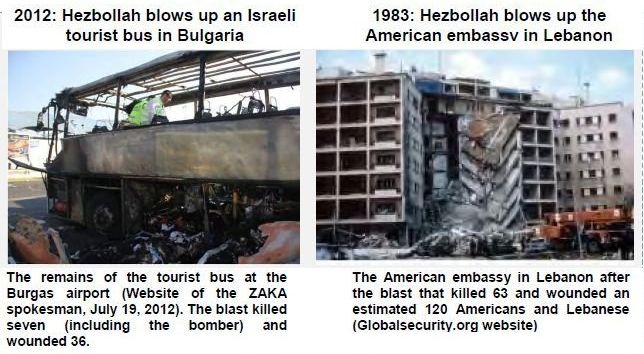
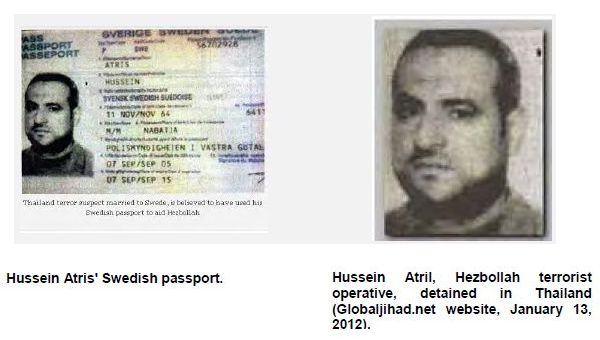

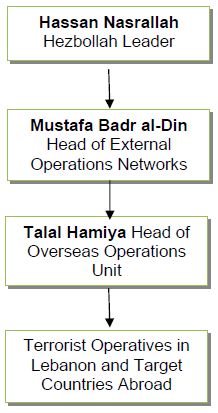
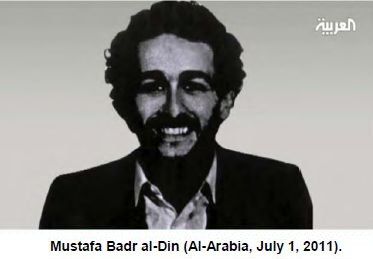
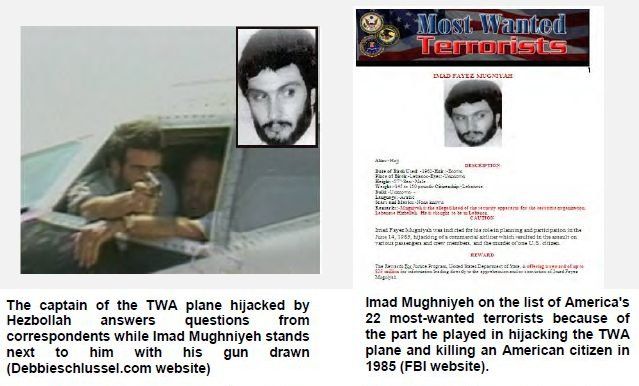
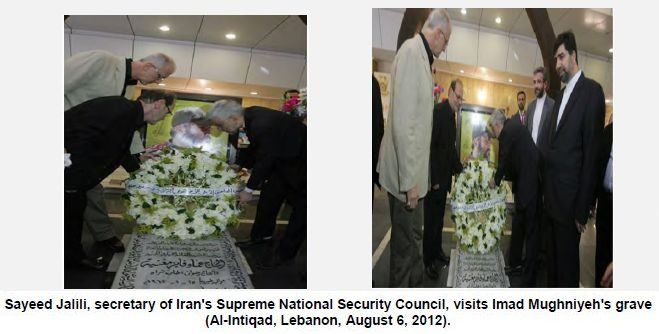
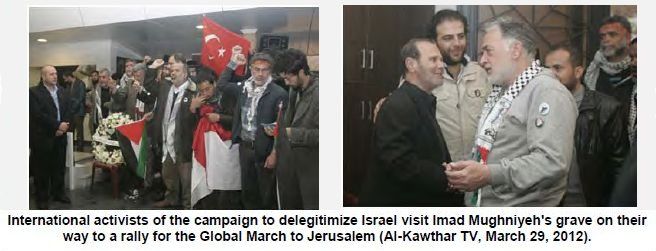

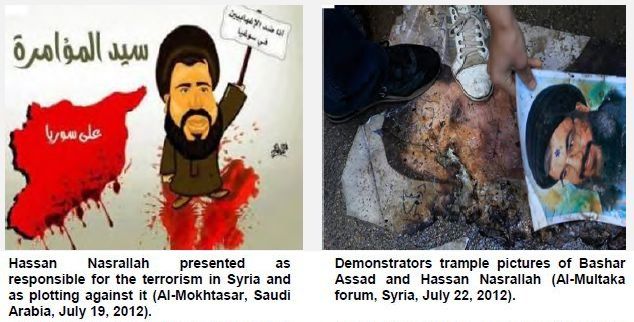
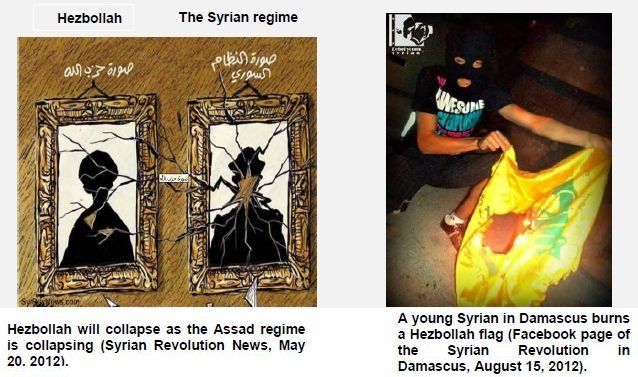
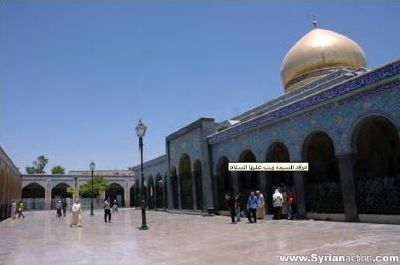


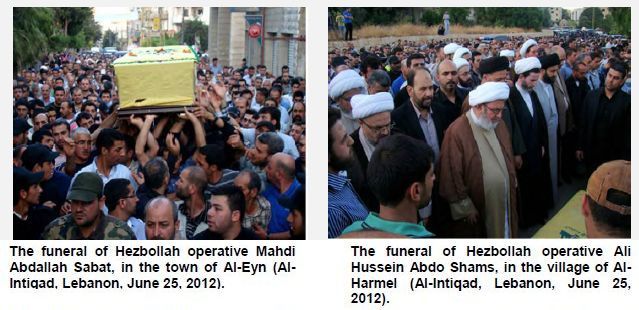
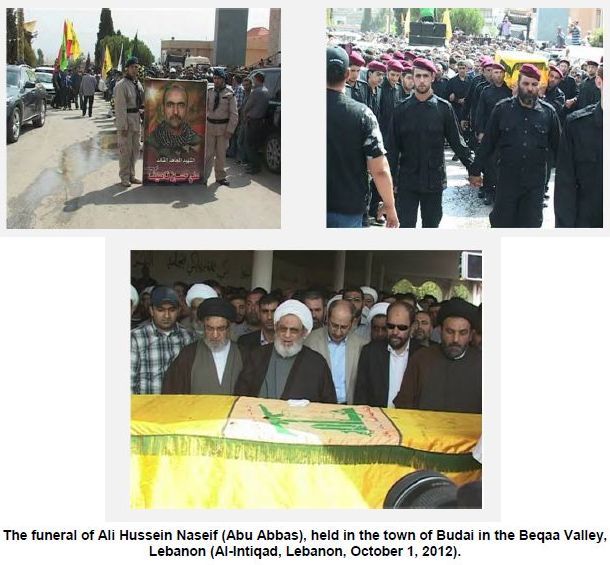
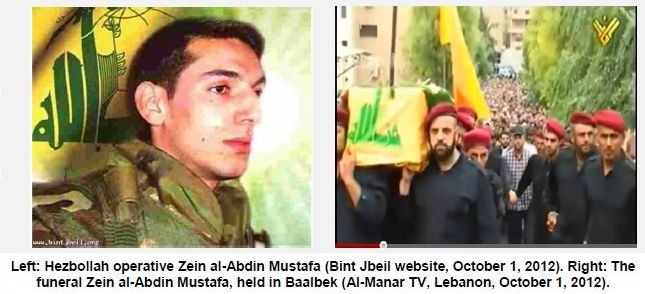
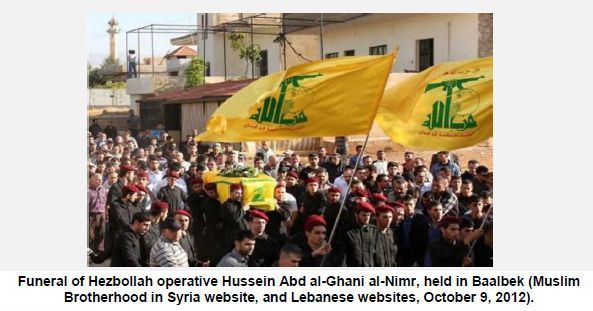

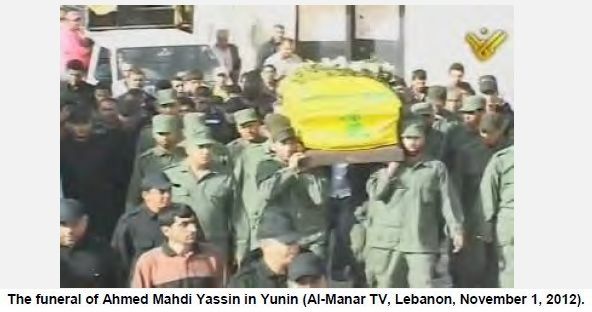

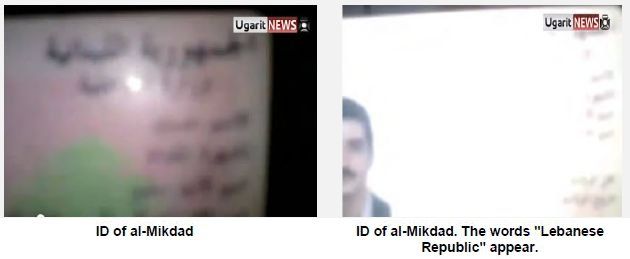
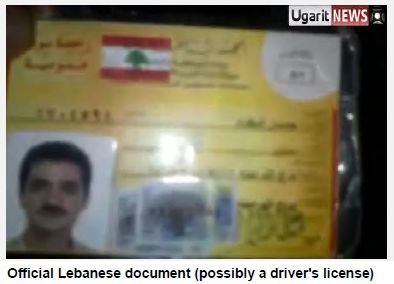

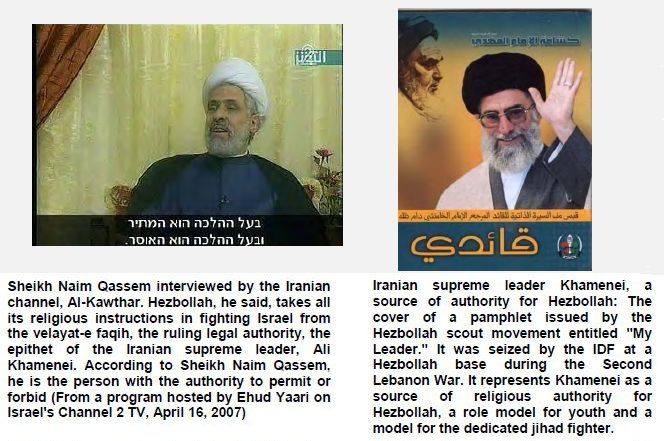
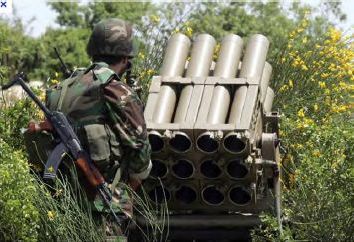
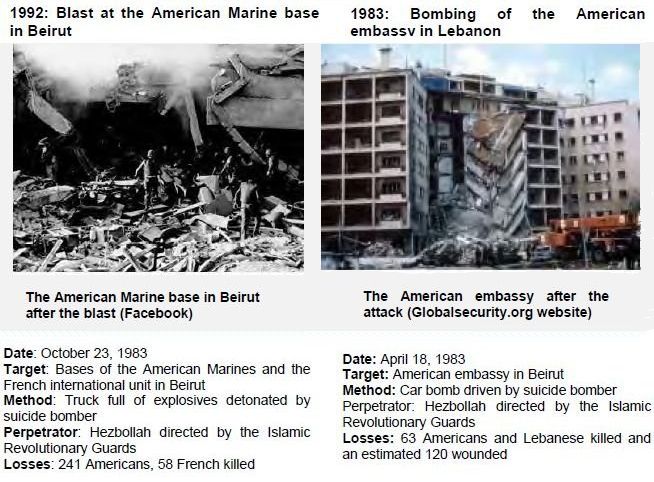


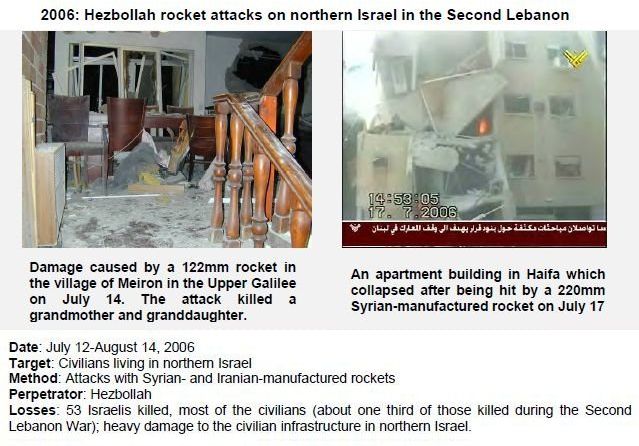
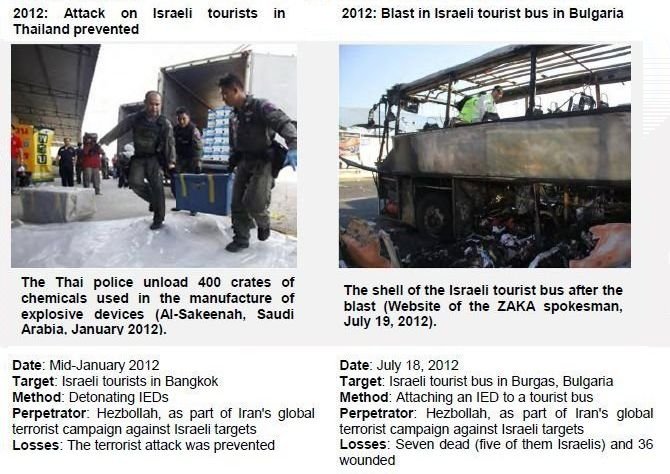




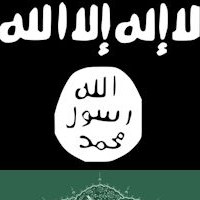




[…] To read the first part of the full study, go here: Hezbollah: Portrait of a Terrorist Organization […]